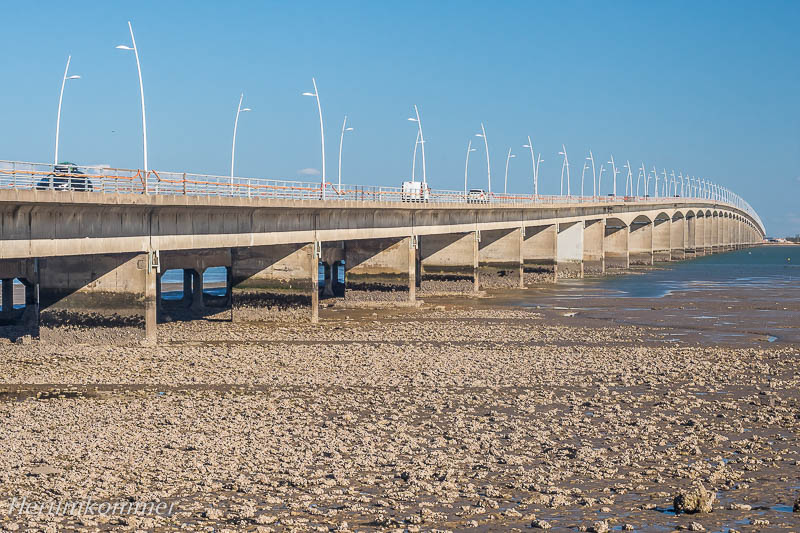
Wegen Sturm darf niemand auf den Leuchtturm Phare de la Coubre. Außerdem wirbelt der Sturm den Sand vom nahe gelegenen Strand auf und vertreibt die Besucher. Uns ermöglicht das, den sehr hohen Turm zu fotografieren ohne Fahrzeuge im Vordergrund. Aber dann verschwinden auch wir und fahren zu einem Wohnmobil-Stellplatz ein paar Kilometer entfernt.
To the Île d’Oléron
Because of the storm, no one is allowed on the Phare de la Coubre lighthouse. In addition, the storm stirs up the sand from the nearby beach and drives away the visitors. This allows us to photograph the very high tower without vehicles in the foreground. But then we too disappear and drive to a camper pitch a few kilometres away.

.
Am nächsten Morgen hat sich der Sturm gelegt und wir machen uns auf den Weg zur zweitgrößten Insel Frankreichs (nach Korsika, ohne Überseedepartements). Südlich der Insel steht Fort Louvois, Ende des 17. Jahrhundert erbaut. Bei Ebbe ist die Meeresfestung zu Fuß erreichbar.
The next morning, the storm has subsided and we set off for the second largest island in France (after Corsica, without overseas departments). South of the island is Fort Louvois, built at the end of the 17th century. At low tide, the sea fortress can be reached on foot.

.
.

.
.

.
Eine sehr lange Brücke verbindet die Île d’Oléron mit dem Festland, das 2862 m lange Viaduc d’Oléron.
A very long bridge connects the Île d’Oléron with the mainland, the 2862 m long Viaduc d’Oléron.

.
.

.
.
